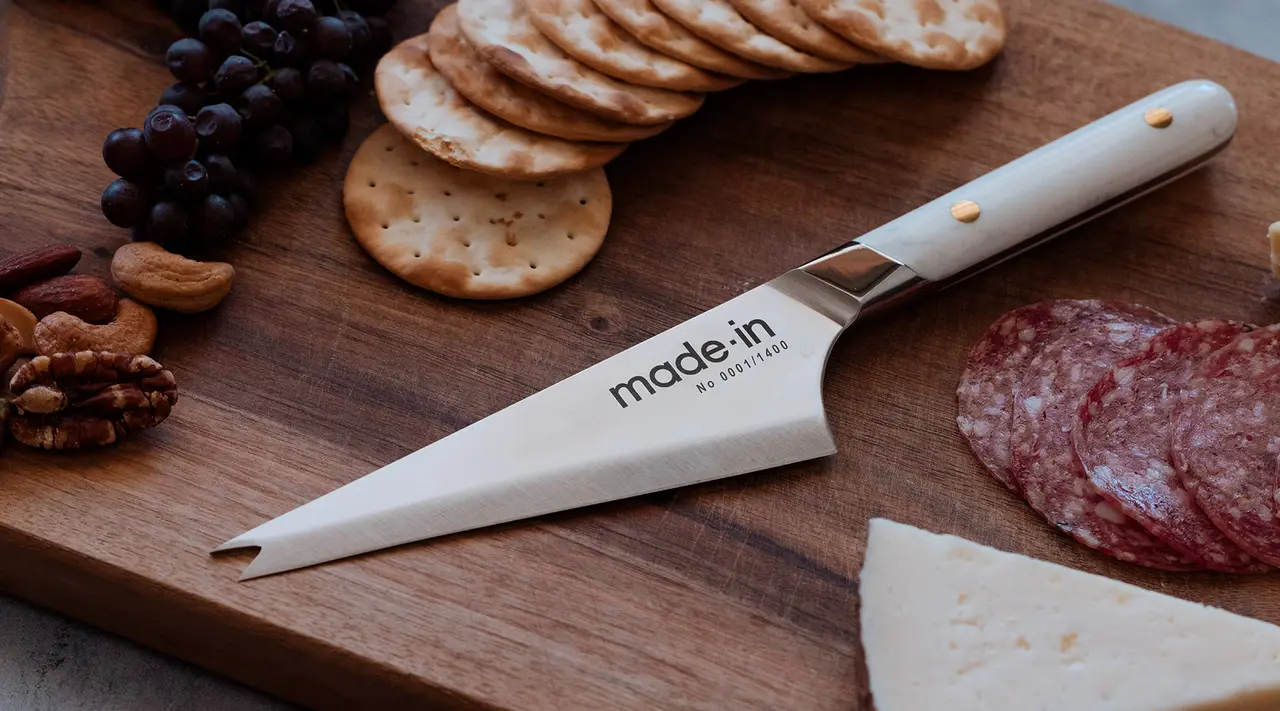Be it a savory Stilton or a buttery Brillat-Savarin, we’re fans of almost any kind of cheese. And for us, one of the most useful tools a frequent host or everyday cheese-lover can have is a quality cheese knife (unless you prefer to work on your “night cheese” Liz Lemon-style, that is).
In contrast to a cheese slicer, which you’d use to produce long, thin curls of hard cheeses like Gruyére, a cheese knife looks a bit like a taller, condensed paring knife and is used to cut cleanly through wedges or wheels of cheese. It’s a true essential for any cheese-lover—which is why we created our own limited-edition version, now available for purchase.
Here’s everything you need to know about cheese knives, from how to care for them to why they’re so good at what they do.
What Is a Cheese Knife?
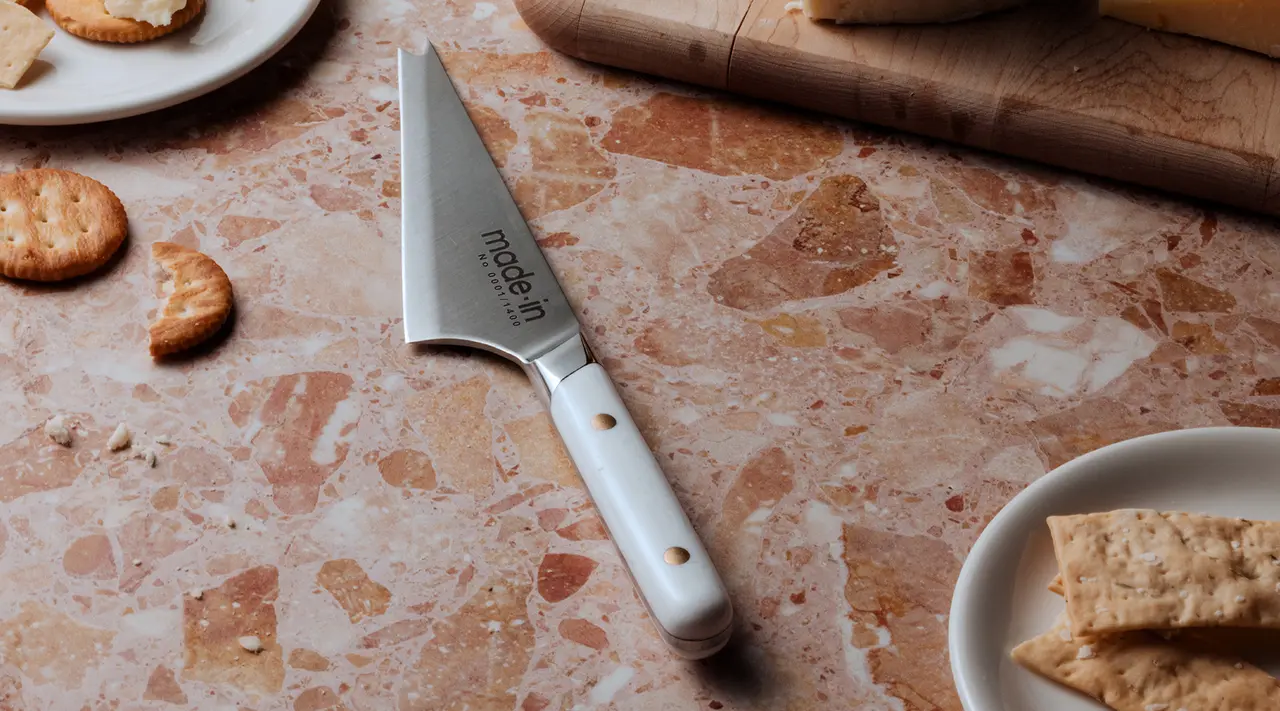
Cheese knives come in a variety of sizes and shapes, depending on if they’re intended for soft cheeses (like Brie and burrata) or for hard or semi-hard cheeses (like Gouda and Parmesan).
A soft cheese knife will often have a blade with less surface area to prevent the gooey interior—or “paste” —from sticking. This might look like a very thin blade, or a wider “skeletal” blade with holes cut out of it. Some knives even have a pronged, or split, tip meant to help transfer the cheese to your plate.
But do you really need to worry about having the right knife for your cheese? In short, yes—if you want to get the most out of your cheese, that is. If you’re spending good money on a wedge of crumbly clothbound cheddar or a ripe Camembert, for example, a proper knife can help you preserve the texture of the cheese while you slice it, as well as limiting mess.
How to Use a Cheese Knife Properly
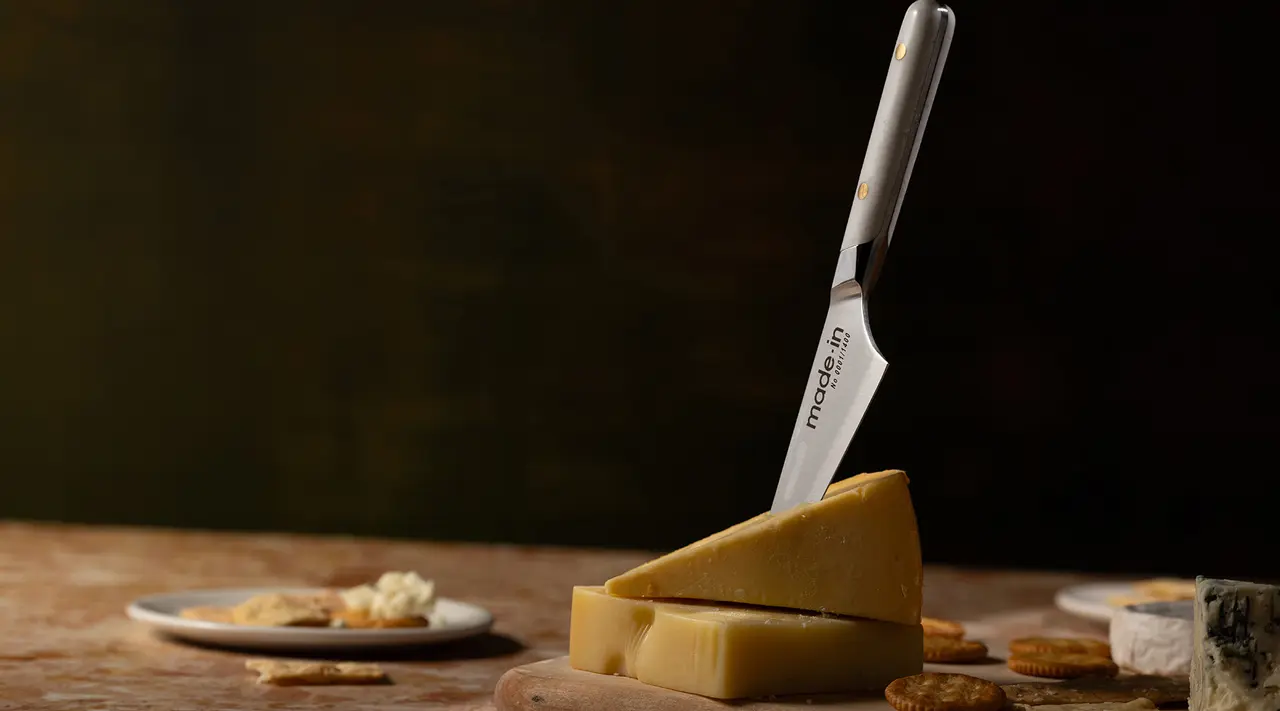
Like with any sharp knife, proper handling technique is essential. Our preferred way to hold a knife is with a pinch grip: First, curl your three bottom fingers around the handle and use your thumb and forefinger to pinch the blade, just in front of the bolster. This method gives you a bit more control over the knife than if you were using a handle grip, in which your fingers aren’t touching the blade.
As for cutting technique, that varies based on what type of cheese you’re working with. If you’re slicing a triangular wedge of cheese for a cheese board, make sure to always slice it lengthwise, from the center to the outer edge: this both preserves the shape and allows you to experience the full spectrum of flavor in each slice, as cheeses ripen from the outside in. For blocks or logs, start at one end of the cheese and cut straight down with your knife to make even slices.
Along with the proper grip, another part of knife safety is keeping your blade nice and sharp. A dull blade can force you to exert too much pressure on the knife, possibly causing it to slip and cut you. If you’re not comfortable using a sharpening stone, you can get your knife professionally sharpened whenever it begins to feel a bit dull. (We offer complimentary knife sharpening services at our retail locations in Austin!) Regular honing can also help to align your blade’s edge between sharpenings.
How to Use a Pronged Cheese Knife
You may have noticed that some cheese knives—ours included—has a split, or pronged, tip. This isn’t a stylistic choice (though we do love how it looks): Like a tiny fork, the prongs are there to pick up a piece of cheese once you’ve sliced it and transfer it from the cheese board to your plate. This is great to have especially if you’re serving cheese at a cocktail party or other event, since it keeps your guests from having to pick up slices of cheese with their fingers or toothpicks.
What to Use a Cheese Knife For
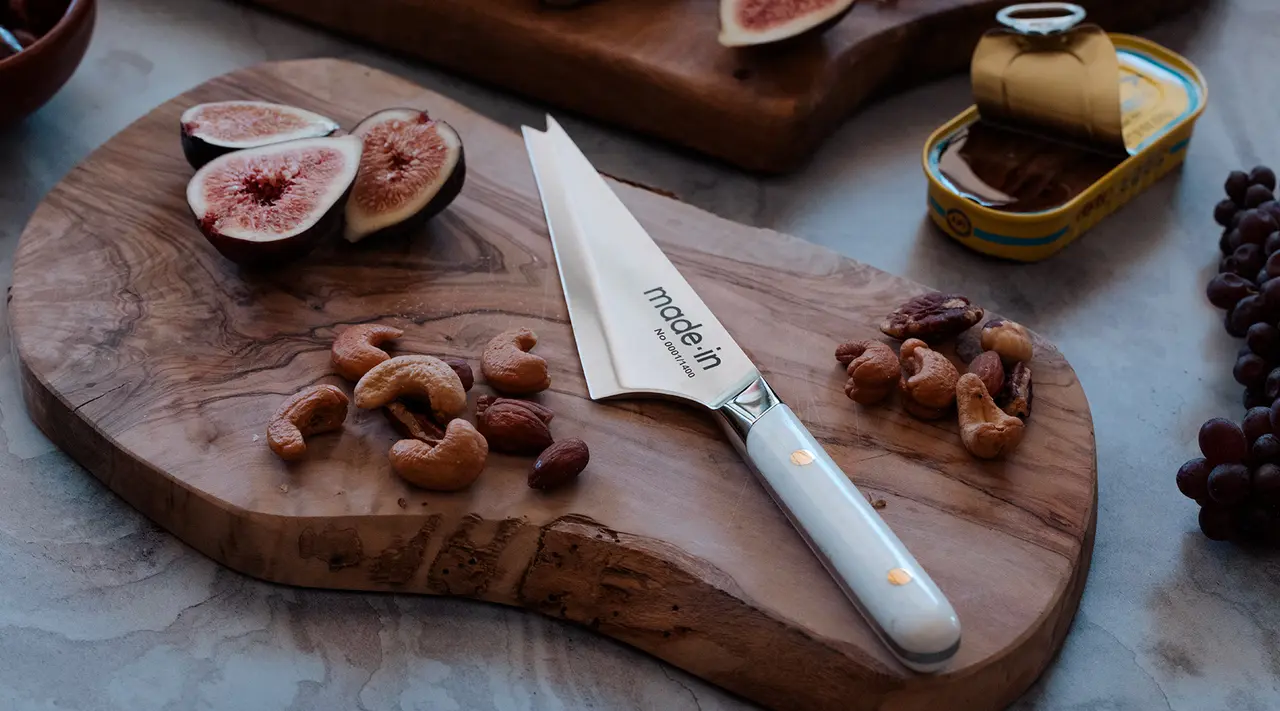
While there’s a range of specialty cheese knives out there, a single, well-designed knife should be all you need. Our Cheese Knife is exactly that: an all-purpose knife with a short, triangular blade meant to cut smoothly through any variety of cheese. The solid construction even allows you to spread cleanly on your cracker or bread of choice. The blade’s height and length is also designed to make full contact with your cutting board while keeping you from knocking your knuckles repeatedly while slicing.
How to Care for a Cheese Knife
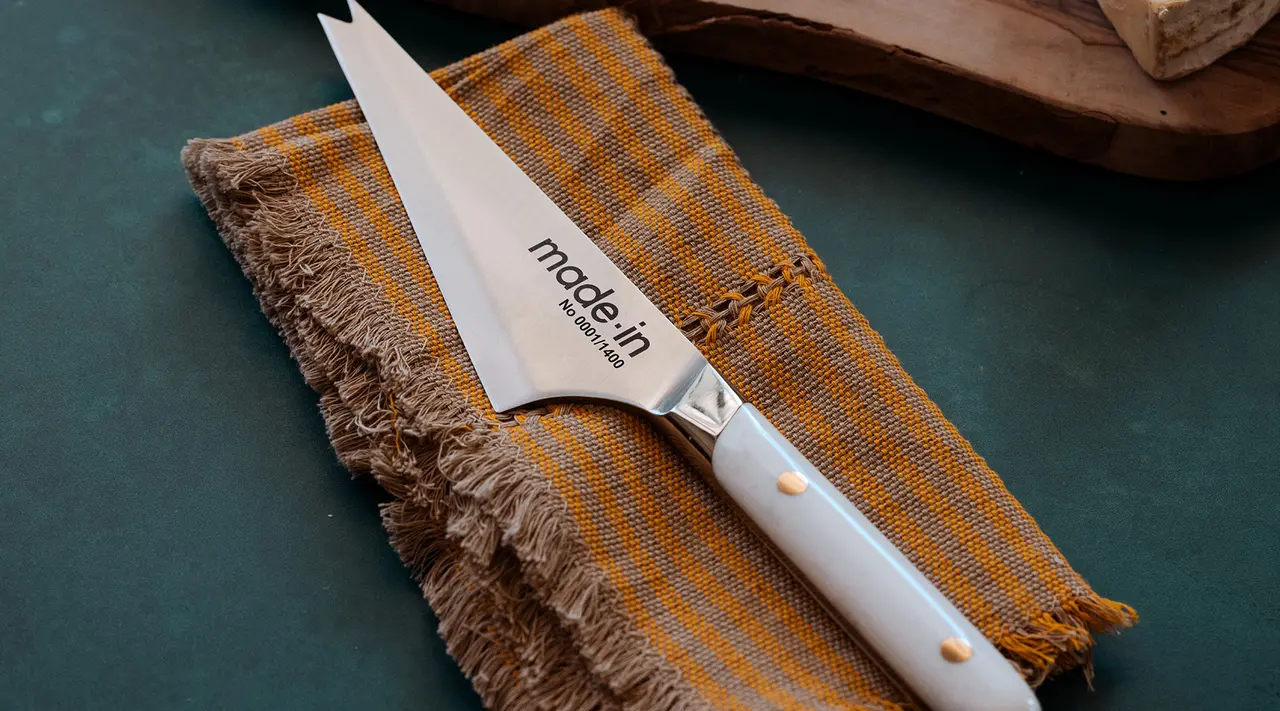
Caring for your cheese knife isn’t much different than caring for any other knife. First and foremost, always make sure to hand wash your cheese knife after every use, and never run it through the dishwasher. Not only will this ding or scratch the blade, but it can also damage the handle. Store in an in-drawer knife organizer or knife block to keep from dulling the blade (and injuring yourself), and sharpen periodically using a whetstone.
Thankfully, our Cheese Knife is both highly durable and easy to take care of. With a full-tang, fully forged blade, your knife will hold its edge longer—and last longer—than a stamped, partial-tang knife. Plus, the stain-resistant White Krion handle will look pristine for years, no matter how many wine-and-cheese nights you plan on hosting.
Ready to Shop?
Like a bird’s beak knife, a dedicated cheese knife is the kind of tool you don’t realize you need until you try it for the first time. With its hardy construction and nimble, hand-forged blade, our Cheese Knife isn’t just nice to look at‚—it’s also an heirloom-worthy addition to your knife collection, and the perfect match for all your future parties (or your late-night snack sessions).
